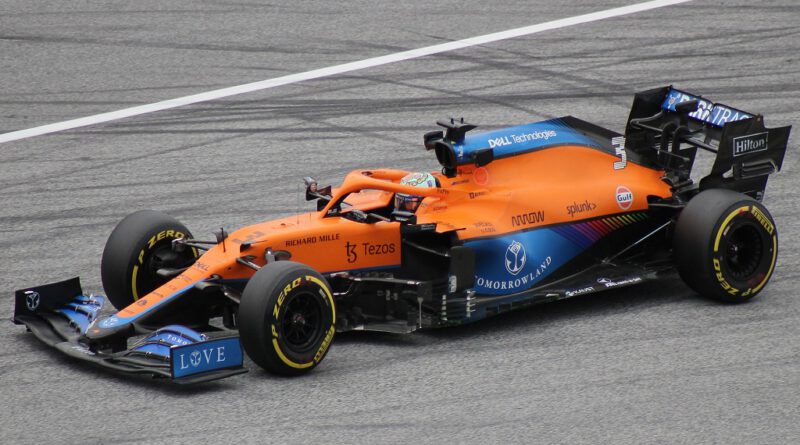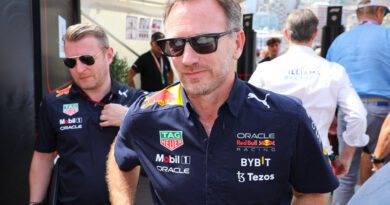Fia Austria
Fia Austria
To say the FIA had a busy weekend in Austria is an understatement, from dealing with rowdy fans to keeping the drivers in check both in the driver meetings and on track. After the weekend in Austria, many drivers have come out to say that the FIA must get their act together before they start hurting the sport altogether. But who was at fault in Austria? Was it the drivers? Or is it time to change the FIA altogether? Well, let’s talk about it. But before that, consider subscribing as this will be the 2nd straight week we’ve uploaded 5 videos in a week. Now that’s out of the way, let’s get to it…
The FIA’s exact wording regarding track limit regulation reads:
“Drivers must make every reasonable effort to use the track at all times and may not leave the track without a justifiable reason. Drivers will be judged to have left the track if no part of the car remains in contact with it and, for the avoidance of doubt, any white lines defining the track edges are considered to be part of the track but the kerbs are not. Should a car leave the track the driver may re-join, however, this may only be done when it is safe to do so and without gaining any lasting advantage. At the absolute discretion of the Race Director a driver may be given the opportunity to give back the whole of any advantage he gained by leaving the track.”
This regulation would be front and center during the entirety of the Austrian Grand Prix as the FIA deleted a staggering amount of lap time because of infringements to this very rule. To be exact, 43 lap times were deleted and that would just be for Sunday’s race. The FIA also had a number of doubtful rulings during the qualifying sessions. One of which would be on Sergio Perez’s qualifying session where the Mexican seemingly fought fairly until Q3 to get to start the Sprint race at P4. But that would all be taken away by the FIA after the stewards noticed a track limits infringement on his best Q2 run.
Once he was found guilty, all of Perez’s times were deleted from Q3 which sent him back to where his 2nd best time in Q2 would have placed him on the grid. This investigation cost AlphaTauri’s Pierre Gasly a chance to take part in Q3 as he was the fastest man in Q2. This could also mean that the contact between Gasly and Mercedes Lewis Hamilton during the Sprint race could have been avoided if Gasly were to qualify higher if he had the opportunity to race in Q3 especially when Lewis had crashed in Q3 as well.
Speaking of the sprint race, Alex Albon was penalized 5 seconds for a seemingly clean racing move against McLaren’s Lando Norris which pushed the British driver out wide at turn three. The next “racing” incident the FIA had to deal with was the collision between Mercedes driver George Russell and Red Bull driver Sergio Perez. While this may seem like Russell’s fault to the naked eye, F1’s resident analyst Jolyon Palmer believes that it was Sergio’s fault and that George was penalized too harshly for what had happened.
In his eyes, Perez was inexplicably trying to pinch Russell who had nowhere else to go while Perez had a whole car width on the outside to make his move. And it seems as though it isn’t only Jolyon who thinks this, Red Bull’s head of driver development Helmut Marko has also gone on record that he had told Perez not to make a move on the outside on that turn before the race. In Helmut Marko’s words:
“We said before the start ‘do not go around the outside in that corner, that is not possible. After that, the car was damaged and it made no sense to continue driving. There was a lot of damage to the floor. He might have finished two laps behind, so it didn’t make sense [to continue]. It was better to save the mileage.”
And as we all know, George had to serve a 5 second time penalty for what had happened which greatly affected his race. Russell would comment on the FIA’s decision after the race saying:
“I think it’s very difficult for the FIA, very difficult for the drivers, there’s been a lot of borderline decisions or maneuvers, whether it’s defending or whether it’s track limits in a racing scenario like last weekend at Silverstone. We don’t want to be dishing out penalties left right and centre, but there needs to be an element of consistency somewhere, I think we need to look at the root cause of the issues and with these track limits, the issue is the circuit. We’re never going to solve this issue until you solve the circuit, and Turn 4 here in Austria, you’ll never have that issue [because of the gravel], but compare that with Turn 1 or Silverstone last week, you’ll always have the issue, so yeah.”
This fundamental lack of consistency has pushed a good number of drivers over the edge with Red Bull’s Max Verstappen and Mercedes Lewis Hamilton as the most vocal ones. Verstappen would go on to say in his post-race interview:
“I think track limits debate this weekend has been a bit of a joke Not only in F1 but in F2, F3. It’s easy to say from the outside, ‘yeah but you just have to stay within the white lines. It sounds very easy but it’s not. When you go that quick through a corner and some of them are a bit blind. If you have a bit more understeer, tyres are wearing, It’s easy to just go over the white lines but do you actually gain time, maybe yes, maybe not. To be honest its only like two or three corners where you can maybe go a bit wider. I don’t think we should have when you give one wheel over you have a penalty or whatever.”
And while Hamilton wasn’t asked the same question in his post-race interview, the 7-time world champion could be heard on the team radio calling out the FIA in one of his exchanges with his race engineer Marcus Dudley. Dudley would be telling Lewis that he had received a warning for exceeding track limits. Hamilton would then reply with:
That’s BS. I didn’t go wide.”
Dudley would then reply with:
“A-firm, we will have a look, Lewis.”
And the exchange would end with Lewis saying:
“Are other people getting it? There’s loads of people going off.”
The FIA would defend their actions after the weekend claiming the number of lap times deleted were very much within what is said in the rule book saying:
“At each circuit, the white line is used as the defined limit of the track, and this has been implemented following discussions with the drivers and teams to improve consistency and clarity for the competitors and fans.”
But that wouldn’t be all that the 2 drivers would have to deal with in Austria. Both Verstappen and Hamilton with the addition of race winner Charles Leclerc would each receive a warning and a 10,000 suspended euro fine. The warning came after the FIA thought the 3 drivers did not adhere to parc ferme rules where every driver should not come in contact with their physios until the drivers have been weighed and are in the cooldown room. If the 3 drivers were to commit the same offense again this season they will be obligated to pay the 10,000 euro fine.
Speaking of fines, another driver to receive a warning and a suspended fine in Austria was Aston Martin’s Sebastian Vettel. Vettel would receive a suspended fine of 25,000 euros after leaving the driver’s meeting without permission. It’s been reported that the said meeting had tempers flaring between the drivers and the FIA as the relationship between the 2 has been increasingly become strained mainly over the inconsistent decision-making over the implementation of rules. The FIA would comment on the Vettel situation saying:
“Drivers are not free to leave when they want, this being a breach of the requirement to attend. Drivers at this level are role models for every driver around the world and in the opinion of the Stewards Vettel failed to live up to that standard in this case.”
Since the warning, it has been reported that Vettel had apologized to the weekend’s race directors and have a constructive conversation about the incident and more.
And now as we head to Paul Ricard, Red Bull team boss Christian Horner thinks that it’ll be more of the same at the French Grand Prix saying:
“I think the problem is the nature of the circuit invites the drivers to use the track limits. And of course, there were many, many drivers that were infringing that over the weekend. I think my concern isn’t so much here, I think Ricard will be a bigger issue in that there is a genuine time gain to be had. And obviously, you’ve got acres of tarmac there, so it’s just inviting you to run offline.”
The FIA will definitely have every F1 fan and driver closely watching their every move next weekend in France. But what do you think? Were the drivers right for being frustrated at the FIA? And are the FIA doing the best they can? Let us know in the comment section below, and as always don’t forget to like and subscribe to the channel if you haven’t!



